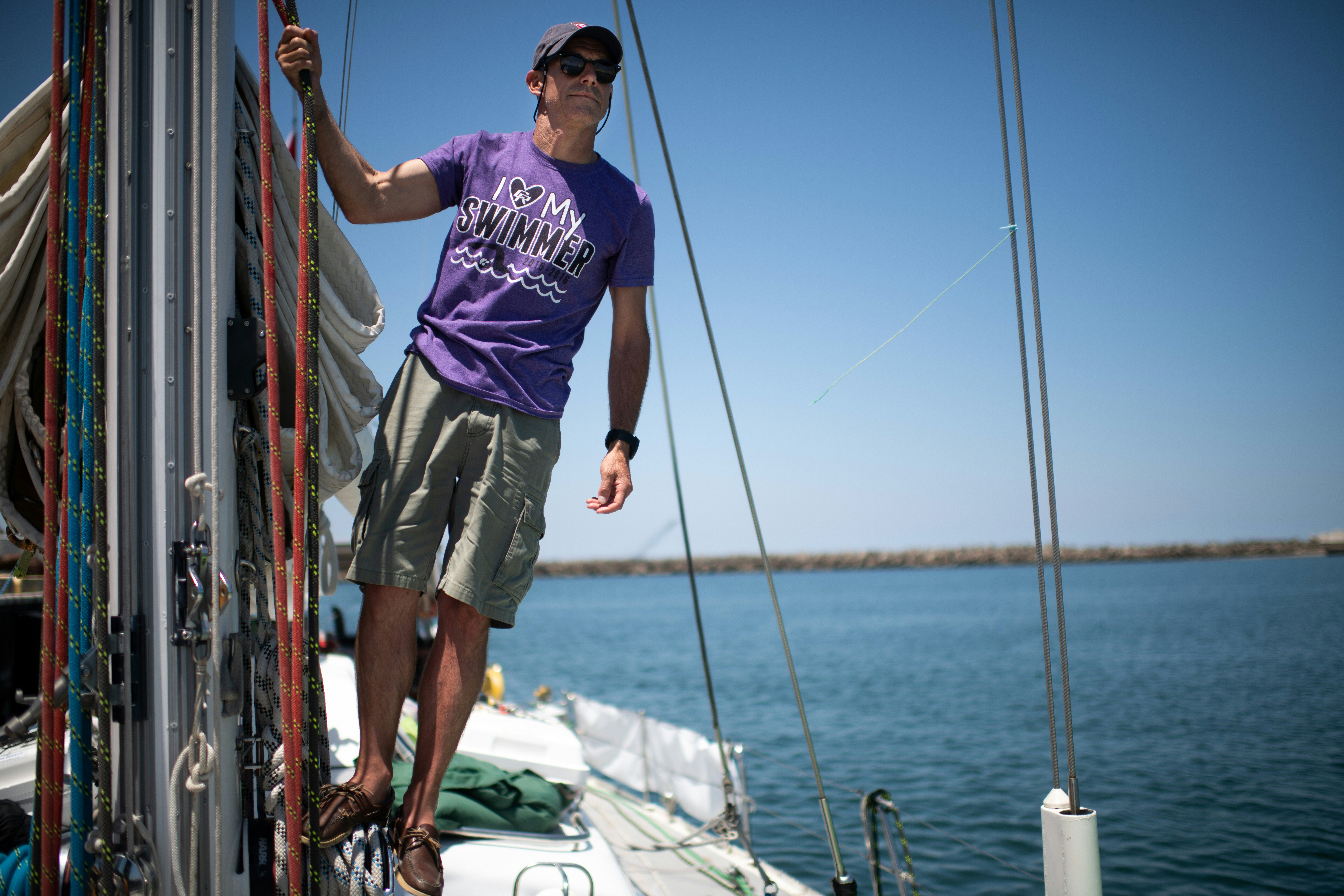Swimmer faces sharks, massive garbage patch on record Pacific crossing
Photo: () | ©AFP
Choshi (Japan) (AFP) – Having once vowed never to attempt such madness again, Ben Lecomte is set to take on giant waves, sharks and a pile of floating garbage the size of Texas in a perilous quest to swim across the Pacific Ocean.
Faced with an epic 9,000-kilometre (5,500-mile) adventure, his bid to become the first swimmer to accomplish the daunting feat begins in Japan and is expected to take more than six months, finishing in San Francisco.
Part adventure, part scientific research, Lecomte and his eight-person support team will conduct a host of marine experiments as they seek to raise awareness of ocean pollution and plastic contamination.
Two days after turning 51, Lecomte will enter the waters off Japan’s east coast Tuesday, after which the swimmer will be at the mercy of the elements.
The danger of sharks and paralysing jellyfish also lurks — but the Texas-based architect tweaks the nose of fear.
“I like to push my personal limit and try to find what that is,” Lecomte told AFP in an interview aboard his yacht.
“I’m like a tiger in a cage going around and around,” he added, after seven years of planning.
“The mental part is much more important than the physical. You have to make sure you always think about something positive or you always have something to think about.
“When you don’t have anything to occupy your mind it goes into kind of a spiral, and that’s when trouble starts.”
Lecomte plans to swim for eight hours a day, burning more than 8,000 calories.
The rest of the time he will rest, sleep and eat on the 20-metre (67-ft) support boat Discoverer that will drop him back in the water at the same spot he exits every day.
Lecomte, who will wear a wetsuit, snorkel and fins, is no stranger to adventure.
– ‘Never again’ –
After swimming across the Atlantic Ocean in 1998 he promised himself “never again”, but Lecomte felt compelled to take on the monstrous Pacific after starting a family.
“Pollution of the ocean has a big impact,” said the father-of-two, who will be gathering oceanographic and medical data for 27 scientific organisations, including NASA.
“When I was little and I was with my father walking on the beach, I didn’t see any plastic, or hardly any.
“Now every time I go with my kids, we see plastic everywhere,” added Lecomte, who will also wear a device to test levels of radioactive material from the tsunami-hit Fukushima nuclear plant.
“It made me think what (the) future for my kids is going to be like. It’s a problem we created and there is a very easy solution to start reversing it — single-use plastics for example, if we stop using them that will make a big change.”
Lecomte leaves from Choshi fishing port in Chiba prefecture — the same starting point as Frenchman Gerard d’Aboville when he rowed solo across the Pacific in 1991.
But Lecomte will actually be in the water, potential shark bait.
“In the Atlantic, I swam for five days with a shark following me, its fin circling,” shrugged Lecomte, who previously suffered nasty stings when jellyfish got caught in his snorkel.
“Everybody thinks of ‘Jaws’ but I’m more afraid of cold water and being in pain, and needing to fight that, than sharks.”
– Garbage patch –
Part of his daunting swim takes him through the Texas-sized Great Pacific garbage patch that floats between Hawaii and California, where tangled plastic poses extra dangers.
His team will collect water samples to learn more about the build-up of micro-plastics littering the area.
But Lecomte knows the application of science — and a boat stocked with 2.8 tonnes of food — will only get him so far.
“What is going to be difficult is every morning going back in the water (because) you hit a wall, normally after 4-6 hours,” he said of the mental challenge.
“I try to disassociate my mind from my body and everything that happens to my body — pain or cold, I try to put aside.”
“I have a schedule of what I’m going to think about for those eight hours… it’s always about keeping my mind occupied.
“I will remember a family birthday for example and the trick is to engage all your senses — try to remember the wind on your skin, how the sun felt, the smells.
“Then ‘boom’, you are back in that moment reliving it and your body is just on autopilot.”
Disclaimer: This story has not been edited by Siliconeer and is published from a syndicated feed. Siliconeer does not assume any liability for the above story. Validity of the above story is for 7 Days from original date of publishing. Content copyright AFP.


